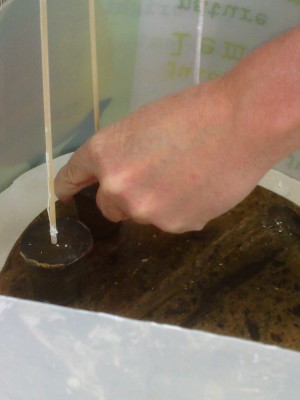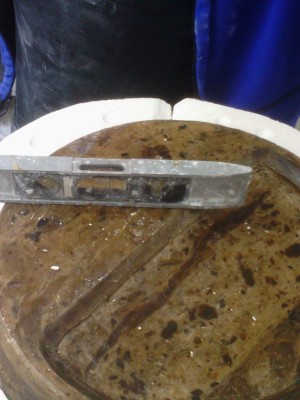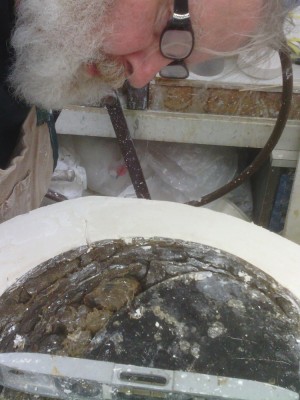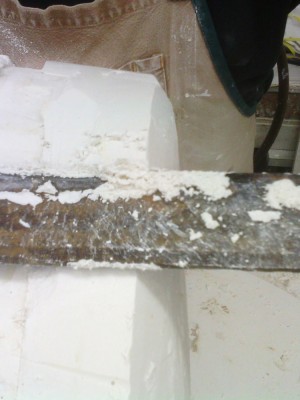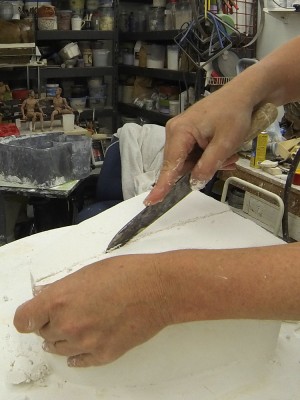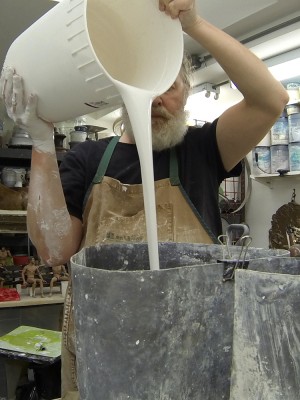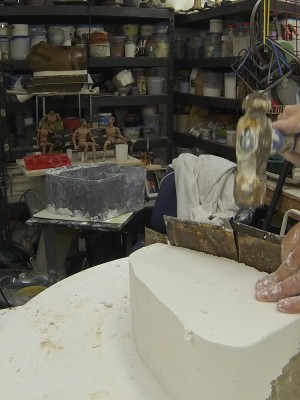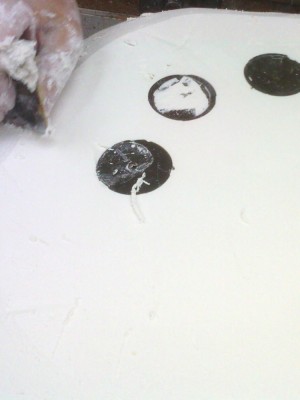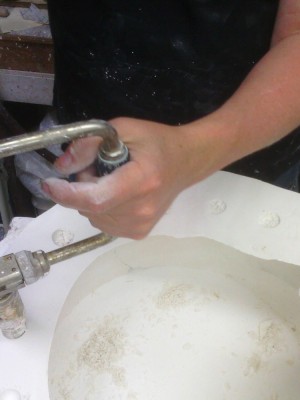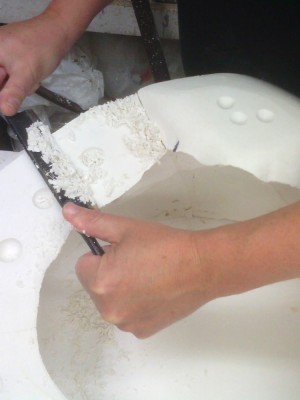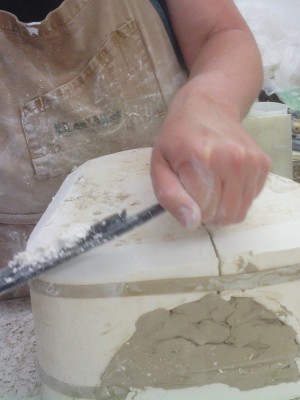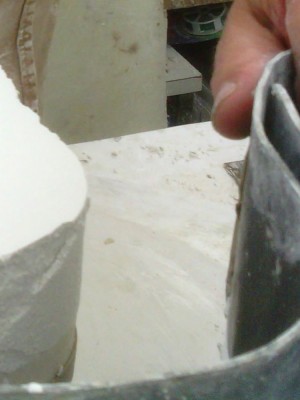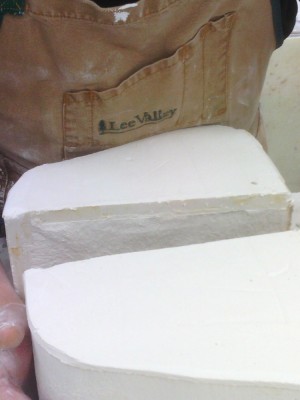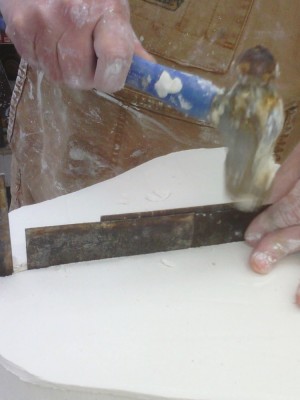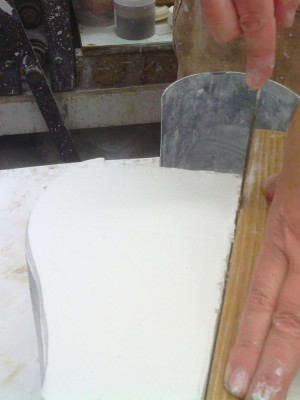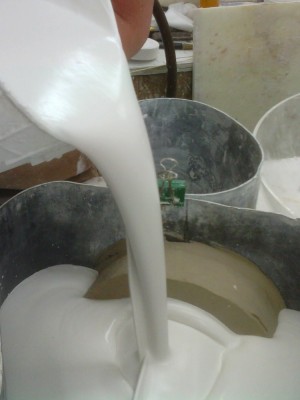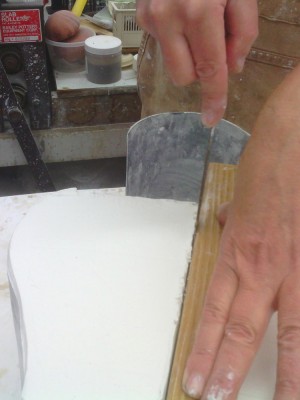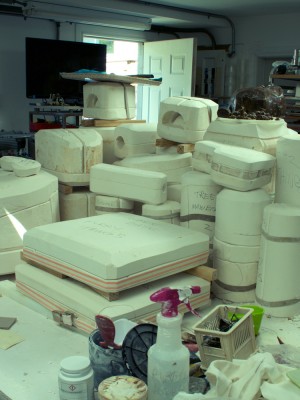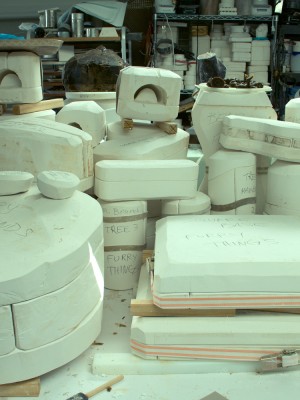The extended ear moulds were done first. No problems there.
I was certainly right about the challenge involved in making the head moulds. It took several days to make the first.
I decided to do a build up for the muzzle and nose. The seams needed more control in this area than the rest of the circumference (which was done by cracking). Will be doing the same for the second head.
The next day I cast the topside of the model. Then I began modelling the underside which took until the next day to complete. Poured the bottom section of the mould once that was done.
As with the tree moulds, there is a drain built in. It would be inconceivable for me to try to lift this full or even empty for that matter. When I move a mould like this, it is one piece at a time. It is rebuilt the reverse way up at the other end. Best not to move these any more than you have to.
The individual plaster pours involved were not entirely without problems. Previous sections shifted a little in each successive pour so that there was a slight misalignment between parts. I chose to do a little re-contouring on the inside of the mould to eliminate any sudden jump at the seams. Copies will be cast thick enough so the surface can be reworked as needed.
The drain for the mould is in an awkward place visually. It needed to be at the highest point of the model which in this case meant the tip of the nose. I made separate nose cap moulds for both heads to better be able to make the nose repairs invisible.
When I made the decision to use the polymer glazes, I had to change my plan for the underside. The Blanc de Chine versions could have been glazed to the bottom edge without incident. A recessed foot would have worked. The advantages of a stiff glaze. The polymer glazes need a buffer zone between them and the kiln shelf. Needed a raised foot.
Want to encourage glaze to roll on corner edge with foot. Thinking about black slip around it in greenware covered by alumina wax for glaze firing. Hope is that the alumina will repel any glaze drips that come its way and cause more of a rolling drip going around the foot. Need alumina to still dust away after firing from the surface of the vitrified black slip. Otherwise, it would be over the plain bisque. Some tests are in order.
I am not sure how I feel about having the raised foot. It is not how I imagined these pieces. Regardless, it is necessary to the success of these given the nature of the glazes I am using. Will have to get used to it.
The wax head was quite stuck in the last section of the mould. As it was no longer needed, I cut it out a little at a time until the remainder finally came free. Cleaned up the working face of this section of the mould to make the clay copies release more easily.
Second head next. Mould will be a bigger still than the first head which used somewhere around 90 pounds of plaster. Another challenging week.
Something I have to decide soon is the edition size for these.

